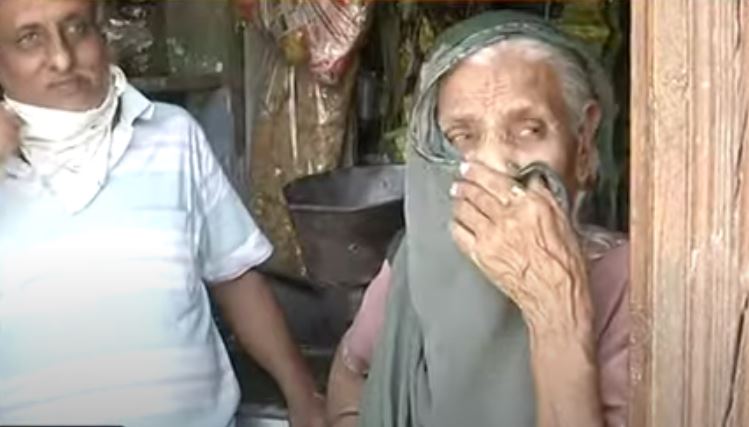Its been more than six months since the farmers’ protest first began and spread across the borders of the national capital. The biggest hotspot of the protests has been the Singhu and the Tikri border. While the second wave of the pandemic continues to wreak havoc across the country, the Arahatiyas masquerading as farmers continue to occupy the two borders and the adjoining areas. A report by News 18 India shows the plight of the villagers residing nearby the borders and how their lives have been turned upside down since the protests began.
The villagers of the Singhu village complained that the road routes going toward Haryana have been jammed by the farmers. As a result, all the heavy vehicle movement has been diverted through the streets of the village. The big heavy-duty trucks pass through the dilapidated streets of the village, posing a problem for the villagers. Even the narrow streets of the village see big SUVs and other cars pass through them which more often than which leads to huge jams.
#Aaj_Ki_Taza_Khabar
सिंघु बॉर्डर में किसान आंदोलन के ख़िलाफ़ लोगों में गुस्सा, लोगों को है कोरोना फैलने का डर.#SinghuBorder #Delhi #FarmersProtests #Farmers #Corona #news #News18India @jaspreet_k5 pic.twitter.com/jgibeGeUcC— News18 India (@News18India) May 28, 2021
At a time when central and state governments have been issuing desperate calls for the people to stay indoors and practise social distancing to avoid contracting the deadly virus, such cramped movement through the village has increased the risk of another wave of the virus.
Calls have been raised by the villagers in unison to remove the farmers from the border so that the villagers can go back to their lives.
“They (protestors) have spread corona in the village in Haryana, in Rajasthan and in Delhi. It has spread because of them only,” one of the villagers told the reporter.
The villagers remarked that when they have to venture out to buy the daily necessity items like food and medicine, it takes hours on an end to collect the supplies as all the routes are closed.
“There are no roads to go anywhere…to reach Narela, there is no route. We need medicine and food, right? But where do we go? There is no passenger vehicle ferrying us around. We are distressed,” another villager shared her side of the story.
Earlier this year, the villagers of Singhu border had gathered courage and try to stand in front of the miscreants of the farmer’s protest. In a video shared by news agency ANI, locals were seen raising slogans, asking the ‘farmer’ protestors to vacate the area. “Singhu border khali karo,” the locals yelled in unison. With tricolours in their hand, the locals demanded the protestors leave the site and shift somewhere else.
#WATCH | Delhi: Group of people claiming to be locals gather at Singhu border (Delhi-Haryana border) demanding that the area be vacated. pic.twitter.com/AHGBc2AuXO
— ANI (@ANI) January 29, 2021
Meanwhile, the ‘farmers’ began pelting stones at the locals and the police. As locals and protestors clashed, the police intervened and urged both sides to stop.
As reported previously by TFI, the Covid cases across Delhi and Punjab accounting for the highest number of the UK mutant variant of the virus have seemingly come from the farmers who had participated in the protests.
The direct correlation between the farmers’ protest and UK mutant strain was explained by one netizen named Navroop Singh who took to Twitter to post a nuanced thread that neatly dissected how the farmers’ protests played their part in the catastrophe.
UK strain has been most reported in Delhi with figures touching 50% in latest spread. The UK strain was first found in Punjab when NRIs got the strain with 80% cases in Punjab of UK strain. How did it spread from Punjab to UK – via Farmers Protests and the relay race of Villages.
— Navroop Singh (@TheNavroopSingh) April 27, 2021
The farmers’ protests have harmed the country in every imaginable way possible. From costing millions in loss to the exchequer by holding the borders of the national capital hostage to delaying the supply of oxygen tankers to being the superspreaders of the virus and now, upending the lives of poor villagers.
